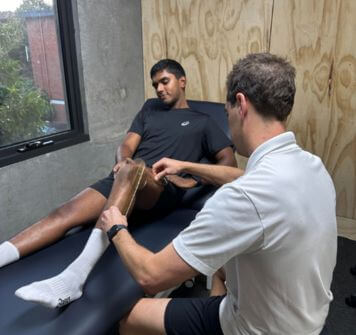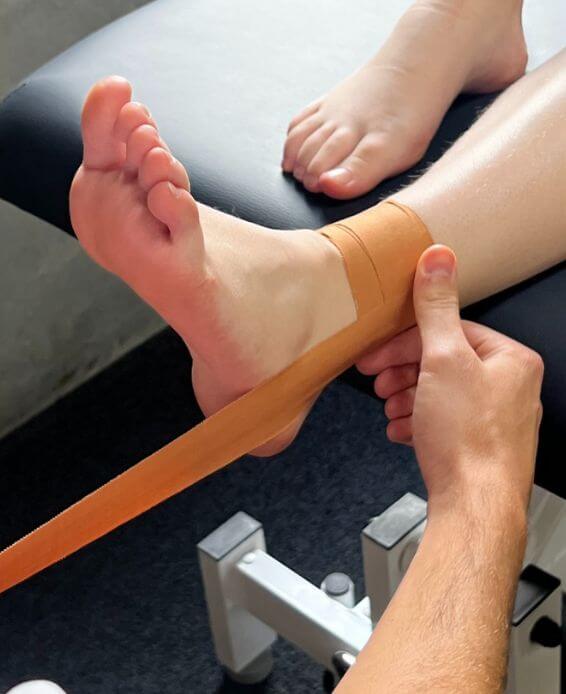RUNNERS PHYSIO MELBOURNE
At Run Ready, our qualified and experienced running physiotherapists specialise in addressing common running injuries, offering tailor-fit assessments, and providing expert guidance on running technique and performance. Join our community for a holistic approach to running wellness, ensuring every stride brings you closer to your personal best.

Our Coaches Have Worked With
Unleash Your Running Potential with a Physio Running Specialist and Professional Running Coach's Long-Term Training Plan
Sick of training without getting results? Or are you tired of simply training on your treadmill? Runners looking to maximise performance, speed, endurance, and avoid injury benefit immensely from structured training plans. Typically, self-guided runners increase their weekly mileage and workouts inconsistently, risking overtraining injuries. Creating achievable running goals that align with your physiology and biomechanics requires expert guidance. Running is not just a sport; it’s a dynamic, full-body experience that demands a holistic approach. A running physio specialist, like Richie Lynch, brings a unique perspective, focusing on injury prevention, biomechanics, and personalised care. Coupled with the expertise of a professional running coach, who tailors training plans for optimal performance, you’ll embark on a journey that goes beyond the miles.
Our qualified physiotherapists and expert run coaches analyse your biomechanics and running technique, identifying weaknesses and imbalances that invite injuries. We can thoroughly assess your movement patterns, identify muscular imbalances, screen for strength and flexibility deficits, and evaluate your running form. We provide essential treatment, exercises, gait retraining cues, footwear recommendations, and coaching on proper mechanics to resolve pain, improve efficiency, build joint stability, and ensure every mile trains your best abilities, ensuring a pain-resistant foundation for long-term training (don’t think short term here!).
Combining run-focused physiotherapy and qualified coaching over the long run transforms you into a stronger, faster, and more resilient runner year after year. From correcting poor movement patterns to unlocking speed potential you never realised, this powerful partnership helps you break through plateaus to fully unleash your inner champion. Seek out physiotherapy care and coaching collaboration to take your running game to the next level, injury free!
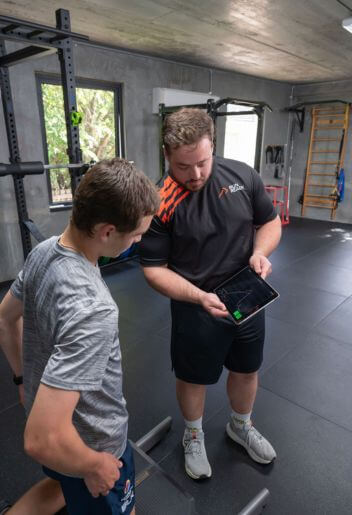


Fuel Your Running Performance by Avoiding These Common Running Training Mistakes
You’ve put in the hard yards, getting up early for sunrise runs. You’ve sacrificed your happy hour meet-ups with friends for extra hill sprints. You’ve checked off months of high-mileage weeks to hit your target marathon pace in workouts. Then suddenly, your training derails. Plantar fasciitis flares up, making your first steps out of bed feel like you’re walking on glass. Shin splints turned what used to be an easy 5K recovery run into a painful death march home. Or maybe it’s the navigator’s knee or a pulled hamstring that has you limping instead of crushing last week’s personal bests.
Injuries always seem to strike just when peak fitness is on the horizon for your goal race. But it doesn’t have to be this way! While some running pains feel inevitable, many issues often stem from common training errors that create an unhealthy overload on the body. With guidance to correct those mistakes, you can bulletproof your body against breakdown as fitness rises to its highest potential.


- Mistake #1 Geared Up for Trouble: Wearing the wrong shoes or neglecting replacements can lead to foot pain, blisters, and even injuries.
- Mistake #2 Overtraining Gets You Nowhere: Pushing yourself is admirable, but overtraining is a one-way ticket to stress fractures, shin splints, and burnout. Run Ready’s qualified physiotherapists design custom training plans based on the 10% rule—increasing your weekly mileage by no more than 10%. We ensure sustainable progress by minimising injury risks and keeping your passion for running burning.
- Mistake #3 Using the Wrong Running Technique: Overstriding, or landing with your foot too far in front of your body, puts extra stress on joints and muscles. Run Ready’s video analysis and assessments identify imbalances and weaknesses in your stride, posture, and arm swing. Our qualified physiotherapists provide personalised coaching to correct your form, transforming you into a smooth, efficient runner who conserves energy and minimises impact. Remember, proper form translates to pain-free miles and improved performance.
- Mistake #4 Conquering Hills the Wrong Way: Losing control on hills, whether running too fast downhill or too slow uphill, can waste energy and elevate injury risks. Conquer hills with strategic pacing, adjusting your effort level rather than sticking to a steady pace. Short, quick steps are the key to navigating inclines effectively.
- Mistake #5 Poor Upper Body Control: Poor upper body form, including slouching or improper arm movements, can affect breathing, posture, and overall efficiency. Run Ready focuses on enhancing your entire running experience, addressing these nuances to keep your upper body relaxed, upright, and aligned.
Initial Physio Injury Assessment Consultation
-
Initial injury assessment
-
VALD strength & fitness assessment
-
Injury summary report and program
-
Liaise with sports coach / team
Follow-up Physio Consultation
-
Ongoing injury management and treatment
-
Return to sport testing
-
Liaise with sports coach / team
Monday Night Injury Clinic (15 mins)
-
Injury diagnosis
-
Referral for imaging if appropriate (Xray, MRI)
-
Management plan
-
Gap free with health insurance or $30
On the Run: Common Running Injuries Every Runner Should Know About
One study, a 2022 systematic review and meta-analysis published in the British Journal of Sports Medicine analyzed the effectiveness of exercise interventions in preventing sports injuries, like running related injuries. The researchers examined data from randomized controlled trials of injury prevention programs that used exercises to target strength, flexibility, proprioception, and technique. Their analysis concluded that multifaceted exercise interventions focusing on muscle strengthening reduced sports injuries by over 60%. For certain overuse injuries commonly associated with running, the injury rate was cut almost in half. Overall, the findings provide clear evidence that structured injury prevention exercises incorporating muscular strength and control elements have a significant protective effect in avoiding both traumatic and overtraining injuries related to sports.
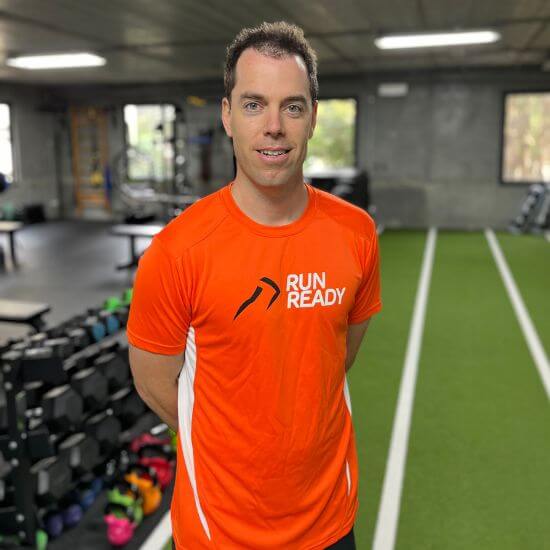
Sports Physio Lead by Richie Lynch
Richie is a sports physio with extensive experience across a range of sports. He has a strength and conditioning background in professional level tennis and cricket and has also played high level Aussie Rules for many years.
Qualifications
- Bachelor of Human Movement
- Masters of Exercise Science (Strength & Conditioning)
- Masters of Physiotherapy
- Level II S&C Coach
- Level II Sports Physiotherapist
Tom O’Connor – Sports Physiotherapist
Tom is a physiotherapist and S&C coach who brings a strong interest in the rehabilitation of all sporting and musculoskeletal injuries, particularly those involving the shoulder, knee, ankle and tendons. Tom brings significant experience working with youth and adolescent athletes, and takes a holistic and detail-oriented approach to all aspects of rehabilitation process. He has completed further training in the management and rehabilitation of acute and traumatic knee injuries, strength and conditioning, running biomechanics and running-related injuries. Outside his time at Run Ready, Tom works in the school sector coordinating the track & field and athlete development programs at a leading Melbourne school, and works as a physiotherapist with Athletics Victoria and the VAFA Umpiring Department. A passionate sports fan, he continues to coach track and field to a national level, and has umpired football up to a state league level.
Qualifications
- Bachelor of Science
- Bachelor of Applied Science and Master of Physiotherapy Practice
- Level 3 Athletics coach (Sprints/Relays/Hurdles)
- Level II S&C Coach
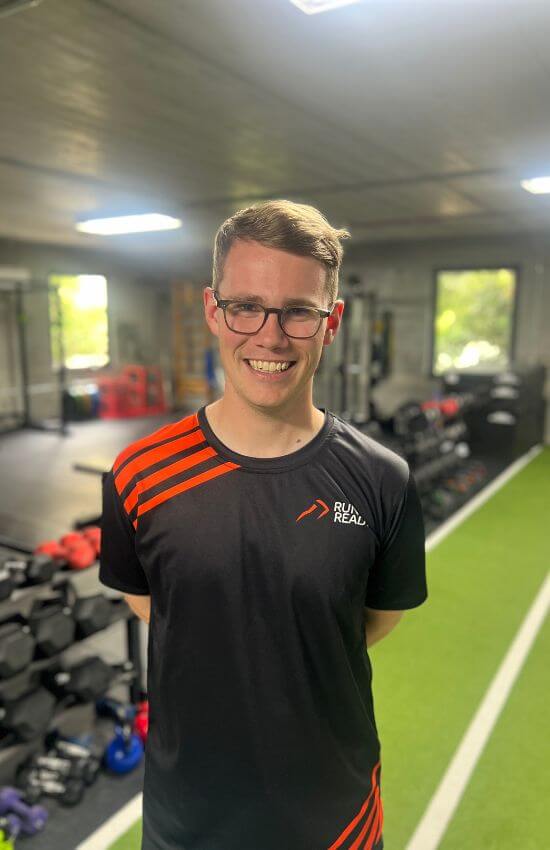
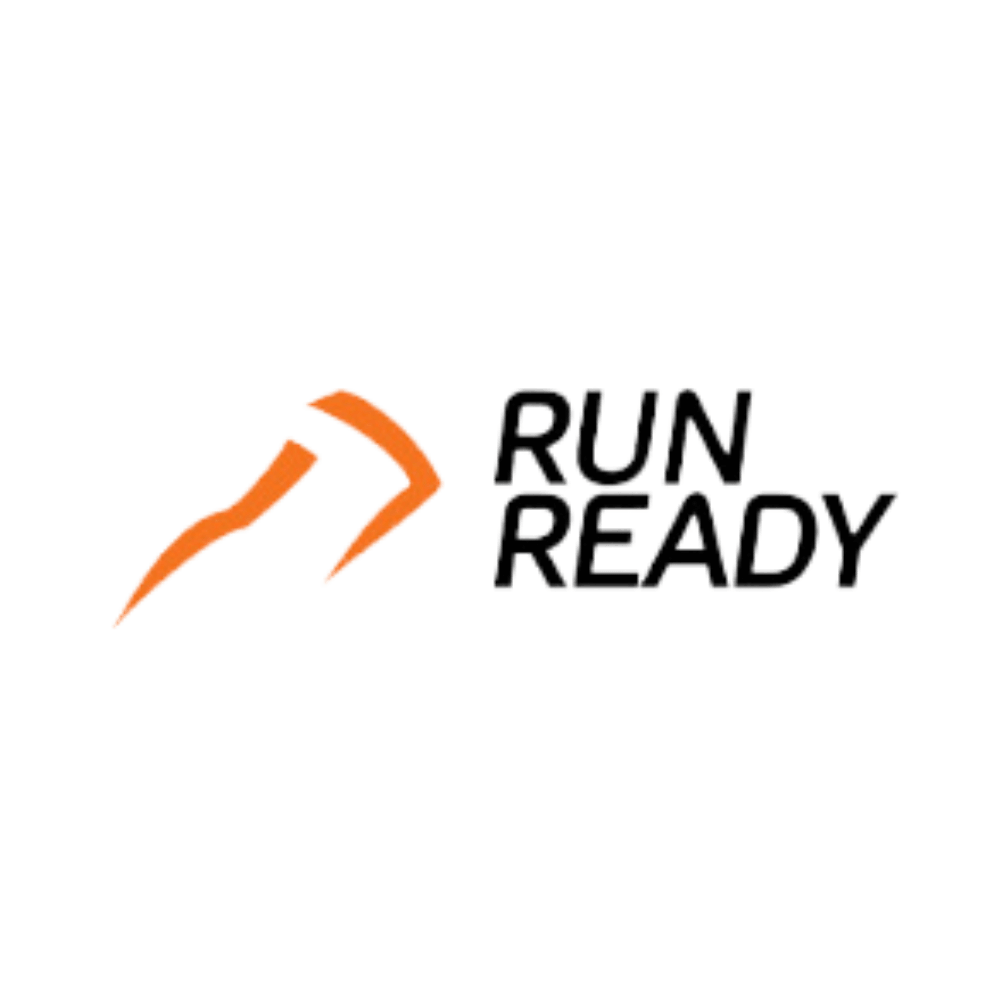
At Run Ready, our goal is to empower runners to achieve their best injury free performance. We offer comprehensive running assessments, video analysis, biomechanics evaluations, and customised training plans to maximise speed and endurance. Our experienced running physiotherapists analyse running technique and identify muscle weaknesses and imbalances to prevent injury. We create tailored treatment and corrective exercise programs focused on strengthening muscles, optimising flexibility, and correcting alignment issues. Through manual therapy, custom footwear, education, and targeted run rehab, we resolve plantar fasciitis, shin splints, knee pain, and other chronic running injuries. Our science-based, holistic approach also encompasses education on posture, mechanics, progression, and preventing future running-related pain. We ensure each runner is fully equipped with the strength, stability, knowledge, and training plans needed to continually set new PRs and reach the finish line without a scratch. Visit us and let Run Ready help you unleash your full running potential.
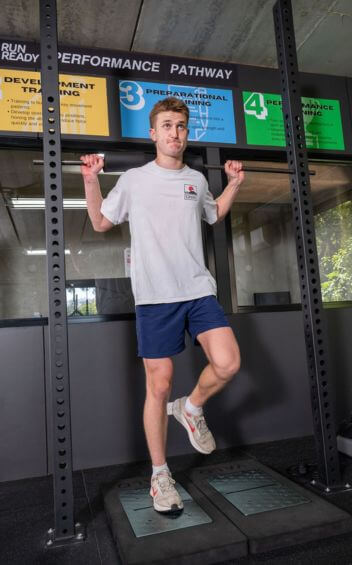

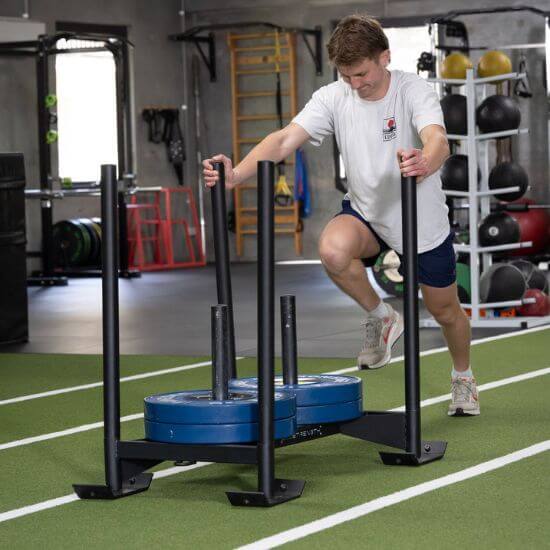
Run Pain Free & Crush Your 2024 Marathons: Expert Coaching & Physio Support for Every Runner
It’s the start of 2024, and the Australian marathon and half-marathon training season is ramping up! Planning your running schedule for the year now sets you up to meet your racing goals injury-free. Whether you’re gearing up to run your first marathon, chasing a new PR, or tackling multiple race distances, here’s how our expert run coaches and running physiotherapists can help you organise training for your upcoming half and full marathons.
- Tailored Training Plans for Every Runner: Whether you’re following a current training program or looking to overcome a past injury, our events cater to your needs. Explore a variety of running programs, each crafted with your fitness level and goals in mind. Connect with like-minded runners and engage in a supportive running community that encourages progress and success.
- Addressing the Core of Running Wellness: Understanding that each runner is unique, our events address the core elements of running wellness, from developing proper biomechanics and techniques to providing treatment options for injuries. Our qualified physiotherapists will guide you through short-term assessments to ensure your running journey is not only powerful but sustainable.
- Injury Prevention and Performance Enhancement: Our focus on injury prevention goes beyond the typical race experience. Qualified physiotherapists will be on-site to provide running assessments, utilising cutting-edge video analysis to fine-tune your running technique. Say goodbye to common running injuries like shin splints, knee pain, stress fractures, and plantar fasciitis, and embrace the joy of running pain-free.
Invest in Your Running Journey: Make Injury Prevention Your First Step to the Finish Line
As committed runners, we pour intensive training into chasing PRs and reaching the finish lines. But without injury prevention habits in place, all that hard work gets cut short by painful, nagging injuries like plantar fasciitis, shin splints, or a runner’s knee. If running injuries constantly sideline your performance, it’s time to switch up your current running program to prevent injury and make it the first step of your running journey. By prioritising injury prevention over simply having a fun running experience, you’ll be investing in a healthier, happier, and more successful running experience.
To safeguard this journey, consider incorporating strength training, a dynamic exercise method that elevates your running performance while significantly reducing the risk of injuries. As your physio-running specialist, we advocate for comprehensive approaches that overcome injuries and addresses various aspects crucial to your running well-being. Here’s how strength training can help prevent running injuries from dampening your running streak:
- Muscle, Tendon, Ligament, and Bone Strength
- Joint Stability and Mobility
- Addressing Imbalances and Weaknesses
- Reducing Inflammation and Soreness
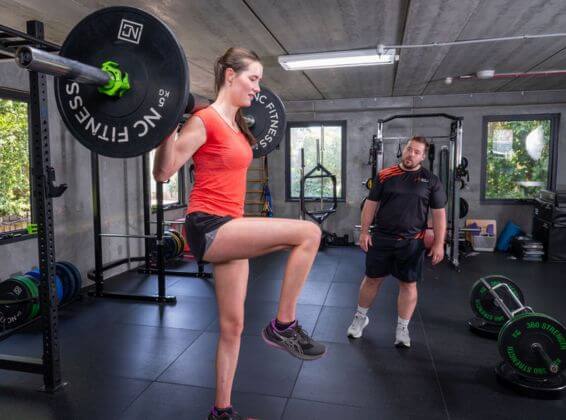
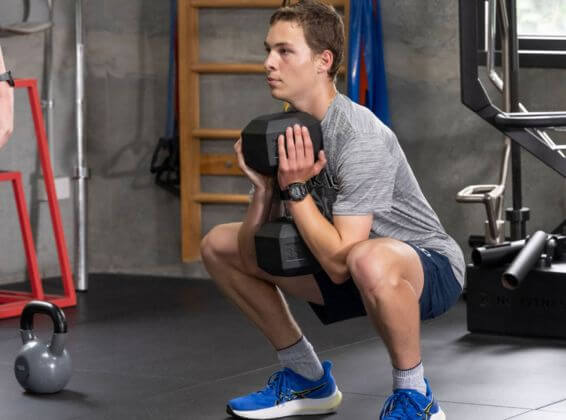
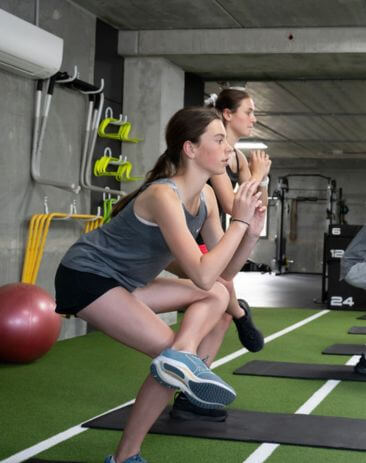
How Biomechanics Guide Your Perfect Shoe Choice According to Expert Sports Physio for Runners
Selecting the optimal running shoe goes far beyond aesthetic preference and budget when injury prevention and peak performance are the goals. Richie Lynch, our experienced sports physiotherapist, considers critical biomechanical factors, such as foot type, arch height, pronation pattern, foot strike, and overall gait, in addition to typical running speed and distance, previous injury history, and the ability to accommodate orthotics if prescribed, for each runner when advising shoe choice for both comfort and safety. He understands that while marketing hype pushes gimmicky features, the most important role of athletic footwear is optimising natural movement patterns, not controlling them.
- Biomechanics helps you find shoes that absorb impact and optimise your stride. Improper cushioning can lead to shin splints and knee pain.
- Biomechanics identifies your foot movement and guides you towards shoes that support and stabilise your run.
- Biomechanics helps your body type match your shoes to your specific needs, maximising your comfort, performance, and long-term goals.
- Biomechanics helps identify your pronation pattern, guiding you towards shoes that control or encourage movement for optimal stability and pain-free running.
- Biomechanics identifies different footstrike styles. Footstrike style distributes impact differently, and the right shoe optimises your rhythm for peak efficiency and injury prevention.
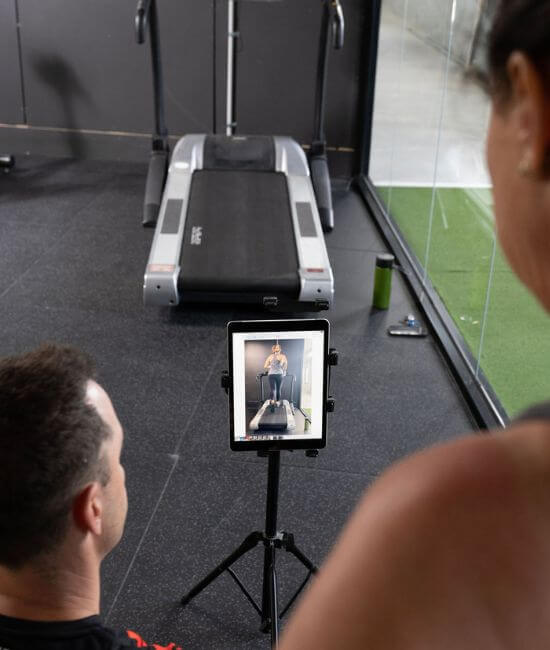
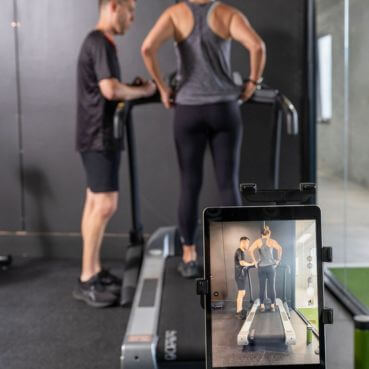
Finding Your Stride: Steps in Choosing the Right Running Shoes As Revealed By the Sports Physio for Running Experts
Selecting the right athletic shoes plays a crucial role in keeping runners performing comfortably across endless miles of training and racing. But with so many types and models available offering different cushioning, stability, and weight features, making the optimal choice can feel overwhelming. No runner wants to be sidelined by injuries or performance plateaus caused by ill-fitting footwear. Follow this guide, covering vital considerations like foot mechanics, gait pattern, running distance, and terrain preference, to confidently match your feet with the shoes to reach your goals injury-free.
Step One: Know Your Foot Type and Arch Height
Understanding your foot type and arch height is crucial. Start by having your arch type professionally evaluated to determine your innate stability needs. Those with flat feet do best in structured shoes that control excess motion, while high-arched runners require extra responsive cushioning.
Step Two: Assess Your Pronation and Foot Strike
Every foot is different, and choosing the right shoe starts with understanding your own. Think of pronation as your foot’s inner roll after landing, and foot strike as how you hit the ground. Observe your old shoe wear patterns or get a video gait analysis to see if you overpronate (excessive inward roll), underpronate (not enough roll), or supinate (foot rolls outward). Overpronators need supportive, stable shoes, while underpronators and supinators need shock absorption and cushioning.
Step Three: Speed, Distance, and Terrain Matter
Your shoe needs to adapt to your mileage and pace. Faster, longer runs demand more cushioning and less support, while slower, shorter jaunts prefer the opposite. Training models provide durability for high mileage, whereas racing flats offer a reactive feel for attempts to beat your personal best.
Step Four: Fit to Perfection
Shoe stores aren’t just for browsing; they’re testing grounds! Try on shoes late in the day when feet swell, and wear your preferred socks and orthotics when running. Shoes should fit comfortably with enough room for toes and lock the heel in place while allowing natural foot expansion. Look for a snug, comfortable fit that supports your entire foot without pinching or rubbing.
Injury Types we Treat
Areas we Treat
When you have an injury, you’re probably wondering whether it’s wiser to stretch or use a foam roller to relieve your pain. There is no definitive answer to the question because the use of either method will be dependent on how severe your injury is and what type of injury it is. Using a foam roller or stretching can cause stress on the damaged tissues and muscles, which could worsen when done incorrectly or in excess. This is why, when you have any type of injury incurred from running, you should always consult your health provider or an expert in sports rehabilitation.
If cleared for use, foam rolling and stretching can promote healing when done judiciously. Foam rolling increases blood flow to aid recovery while stretching maintains flexibility and range of motion. However, there is a time and place: avoid static stretching of damaged muscles and use dynamic motions instead. Start very gently and stop immediately if pain arises.
You can also follow the “RICE” guideline when injured.
- R: Rest the injured or damaged areas as needed
- I: Ice to reduce inflammation
- C: Compress with wraps
- E: Elevate the injured areas to reduce swelling
Note: Always remember that stretching or foam rolling, when properly partnered with recommended primary treatments, can enhance and speed up the healing process.
There isn’t a fixed timeline to completely heal muscle strains. Like all other things, how fast or how slow the healing process is will depend on the type and severity of your injury, which can be graded from I to III.
- Grade I: Mild muscle strain that damages under 5% of your muscle fibres. It can be healed within a few weeks with rest and some treatments, such as ice treatments.
- Grade II: Moderate strain that damaged and disrupted more tissue than Grade I and can take at least 3 months (or more) until recovery. Treatment often includes physical therapy.
- Grade III: Severe muscle strain that fully ruptures your muscles or tendons. Most will require surgery and extensive sports rehabilitation over a couple of months up to a year (or more).
If you want your injury to heal faster, one of the keys is to seek prompt medical attention and diagnosis, especially if you have severe symptoms like unbearable pain, continuous swelling and bruising, or loss of function in the injured area.
Ice baths may or may not be effective for injury recovery because the success of ice baths or ice treatments is dependent on many factors, like type of injury, severity, physiology, and the proper use of the ice treatment. Always remember that ice baths are not a stand-alone treatment. They are normally used alongside or integrated into a custom recovery plan for the injured person. Consult a running sports physiotherapist or doctor of sports medicine on any kind of injury before relying on an ice bath to heal your injury. These people can provide and prescribe you with the best and safest practices when using an ice bath.
We know you’re probably eager to get back, hit the pavement, and run again, but returning to running safely after an injury requires a lot of patience and a systematic and gradual build-up training plan that’s tailor-fit to your recovery timeline and fitness level. We are aware and understand that every running injury is unique (in terms of severity), so the general rule of thumb is to wait until you can walk free of pain for at least 30 minutes before getting back on track! Once you resume running, you should remember to ease into it with short and slow runs before increasing run mileage. Don’t do fast runs or uphill runs and listen closely to your body. If you do feel any pain while running, take it as a sign to stop or slow down. Incorporating other activities, like cycling or swimming, a few times a week can be beneficial for your recovery. Flexibility and strength training are also a must to rehabilitate and stabilise the injured area.
There isn’t a definitive answer as to when you can get back to running after an injury; but if you want to get a more exact recovery timeline, consult with sports physiotherapy experts like ours at Run Ready. Our sports physios can factor in how severe your injury is, your symptoms, your medical history, your running goals, and your running abilities to map out a safe and customised return to a sport rehabilitation program.
If you’ve incurred a running injury, one of the first things that might come to mind is whether you need an MRI immediately! While getting an MRI to check your injury is good, the decision to get an MRI will depend on different factors. An MRI can effectively detect soft tissue damage and is often warranted if:
- You have severe, persistent pain, swelling, instability, numbness or tingling, or weakness
- Prior injuries or surgeries exist in the affected area
- Conservative treatment like physical therapy or medication has failed
- Surgery or other invasive procedures are being considered
MRIs, however, can drain your pockets and time and aren’t always the first course of action when you get a running injury. They may be avoided if the injury is mild or easily diagnosed otherwise. The best thing to do once you get a running-related injury is to consult an experienced sports physiotherapist like Richie Lynch here at Run Ready. He can fully evaluate your injury, perform initial tests or imaging if needed, and provide individualised recommendations on if and when advanced imaging like an MRI becomes necessary. Getting their input helps ensure appropriate, effective care tailored to your situation.


